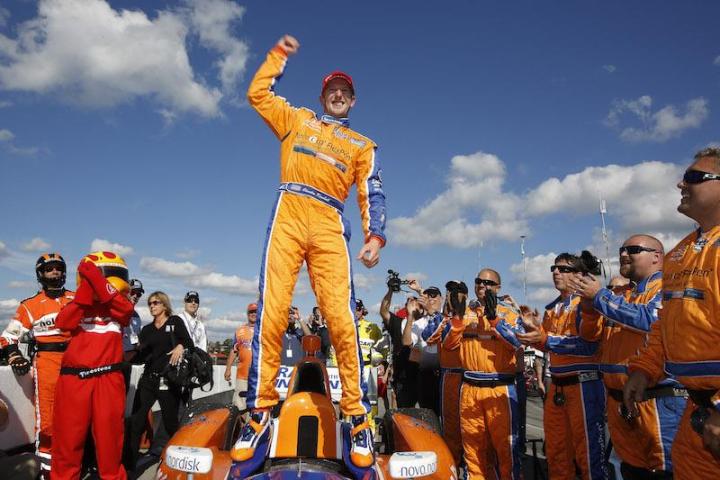
The setup is fairly simple: a commercially-available continuous glucose monitor that Kimball wears on his skin. The information is sent to his car’s data electronics system, which is when things start getting really cool.
“The electronics system is tied into everything the car does, from the engine diagnostics, to tire pressures, brake temperatures, engine fuel levels, everything,” Kimball explains. “So on my steering wheel, on my electronic dash, I have everything from lap time, to speed, oil pressure, blood sugar, water temperate, gear — the car and body data are right there together.”
Like most drivers, Kimball has a drink system mounted in his vehicle’s cockpit. His consists of two, 1.5-liter containers filled with water and orange juice, which he can access through a special, 3D-printed valve at any time. When the sensor (or the pit crew, who monitors his levels wirelessly) alerts him, he can refuel himself without missing a beat.
Racing drivers and performance junkies often wax about being connected to their cars, but it doesn’t get more connected than this. The system, which Kimball polished alongside his father and engineering team, means his body and car function as a harmonious unit.
“Not only can I keep track of what my blood glucose is doing during a race, the engineers on the timing stand can keep an eye on it as well,” he said. “In essence, they can make sure the car is running right and my body is running right all at the same time.”
Kimball, who was accepted to Stanford’s mechanical engineering program before he pursued professional racing, says that he always had an affinity for math and science in his back pocket if a position behind the wheel didn’t pan out. After taking a few laps, though, he realized that racing was something to fight for.
“When I was diagnosed, I had fallen in love with driving so much that I wasn’t about to let something like my diagnosis get in the way,” he said. “I really was motivated to figure out a way to make it work for me.”
And that he did.
The 2015 IndyCar season just kicked off on March 29 with an event in St. Petersburg. Kimball’s next race comes April 12th at the Indy Grand Prix of Louisiana.



